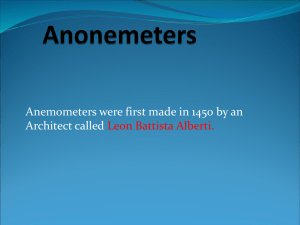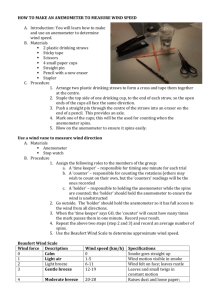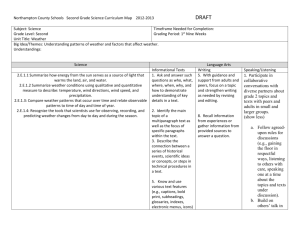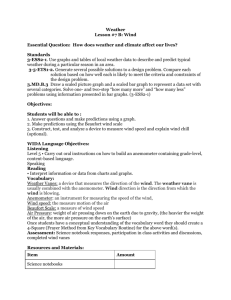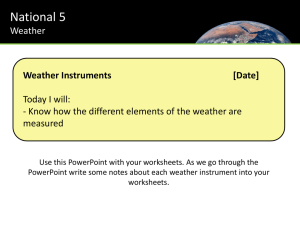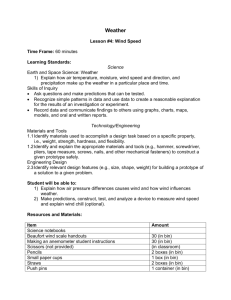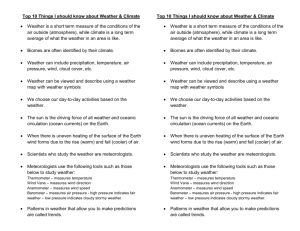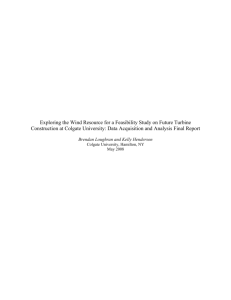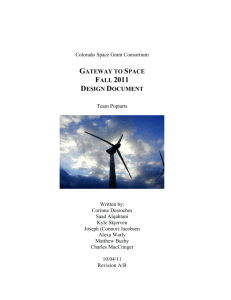Anemometer Challenge 2015
advertisement
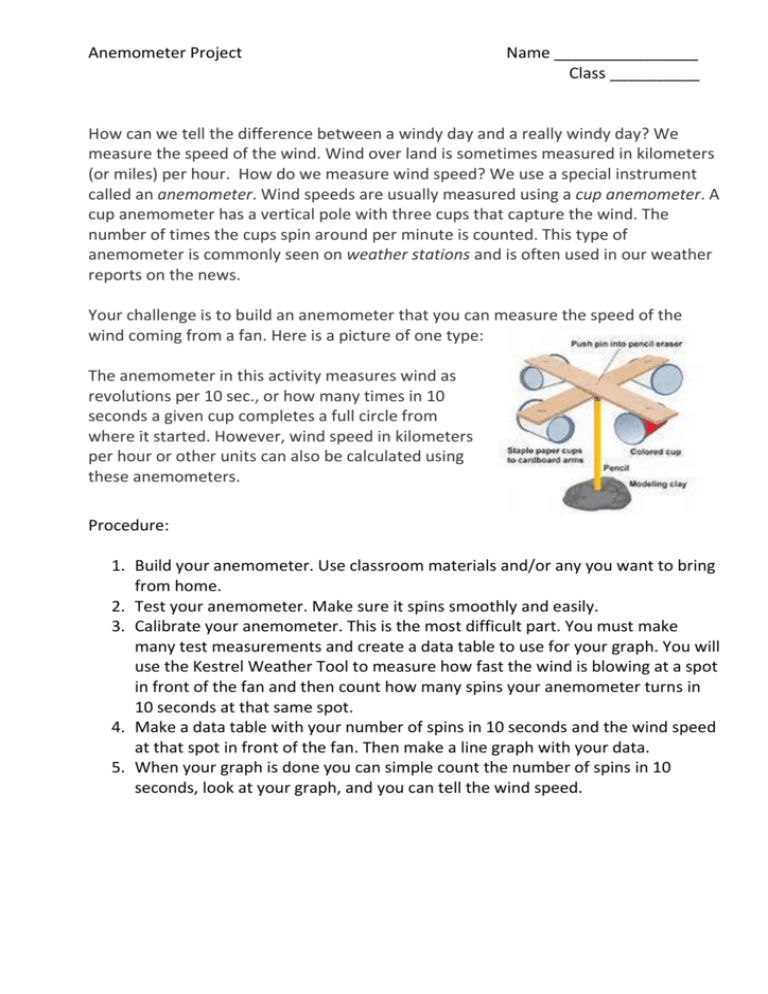
Anemometer Project Name ________________ Class __________ How can we tell the difference between a windy day and a really windy day? We measure the speed of the wind. Wind over land is sometimes measured in kilometers (or miles) per hour. How do we measure wind speed? We use a special instrument called an anemometer. Wind speeds are usually measured using a cup anemometer. A cup anemometer has a vertical pole with three cups that capture the wind. The number of times the cups spin around per minute is counted. This type of anemometer is commonly seen on weather stations and is often used in our weather reports on the news. Your challenge is to build an anemometer that you can measure the speed of the wind coming from a fan. Here is a picture of one type: The anemometer in this activity measures wind as revolutions per 10 sec., or how many times in 10 seconds a given cup completes a full circle from where it started. However, wind speed in kilometers per hour or other units can also be calculated using these anemometers. Procedure: 1. Build your anemometer. Use classroom materials and/or any you want to bring from home. 2. Test your anemometer. Make sure it spins smoothly and easily. 3. Calibrate your anemometer. This is the most difficult part. You must make many test measurements and create a data table to use for your graph. You will use the Kestrel Weather Tool to measure how fast the wind is blowing at a spot in front of the fan and then count how many spins your anemometer turns in 10 seconds at that same spot. 4. Make a data table with your number of spins in 10 seconds and the wind speed at that spot in front of the fan. Then make a line graph with your data. 5. When your graph is done you can simple count the number of spins in 10 seconds, look at your graph, and you can tell the wind speed. Standard Beginning Approaching Meeting Exceeding Learning Behaviors: Active Learning and Effort Rarely worked independently to create an anemometer or gave little effort in preparing for the presentation. Partially worked independently to create an anemometer or gave partial effort in preparing for the presentation. Worked independently to create an anemometer. Gave consistent effort in preparing for the presentation. Worked independently to create an anemometer. Gave tremendous effort in preparing for the presentation. Science and Engineering Practices: Obtaining and Communicating Information Incompletely communicates challenges, solutions and recommendations. Data and or graphs are missing or are hardly used to share the dependability of the design. Partially communicates challenges, solutions and recommendations. Data and or graphs could have been better used to share the dependability of the design. Clearly communicates challenges, solutions and recommendations. Data and or graphs are used to share the dependability of the design. Clearly communicates challenges, solutions and recommendations. Data and or graphs are used to share the dependability of the design. This presentation goes above and beyond the expectations. Applying Knowledge About Concepts: Developing Possible Solutions Anemometer functions poorly or not at all, and not 40% or better in accuracy compared to the Kestrel. Anemometer functions, but is only accurate to within 30-40% compared to the Kestrel. Anemometer is durable and functions well. Accurate to within 20% compared to the Kestrel. Anemometer is durable and functions well. Accurate to within 10% compared to the Kestrel.
